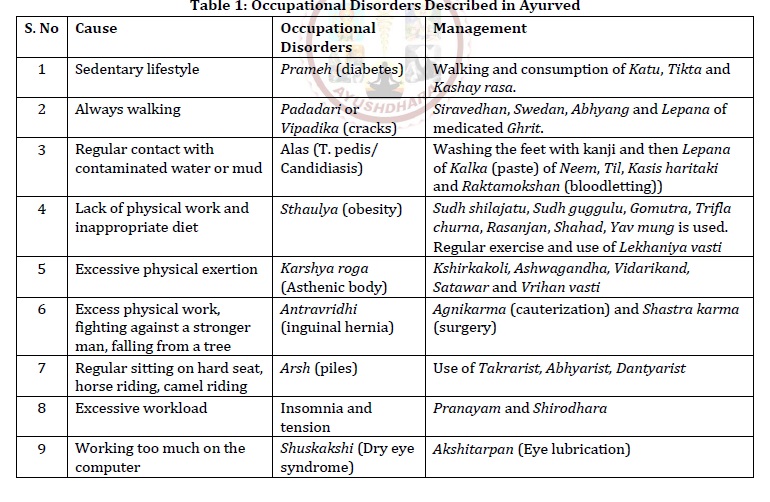Description of Occupational Disorders in Ayurved and their Management
DOI:
https://doi.org/10.47070/ayushdhara.v9i1.845Keywords:
Occupation, Disease, Prevention, Ayurved, LifestyleAbstract
Everyone needs to do an occupation in the life and every occupation has its own hazards. Many occupational disorders and their preventive and curative management have been described in Ayurved. Due to industrialization, many occupational disorders have been emerged which can be treated by Ayurvedic medicines. Many occupational disorders can be prevented by using advance technology. We should try to prevent the occupational disorders than to treat them. Lifestyles mentioned in Ayurved should be followed to prevent various occupational disorders. We should follow the rules of Dincharya, Ritucharya, Adharniya and Dharniya Vegas, Ahar-vihar to prevent occupational disorders. Yoga is also beneficial to maintain occupational health. Chapters regarding occupational health can be added in the syllabus of UG and PG courses of Ayurveda. Post Graduate Diploma in Occupational Health (PGDOH) course can be started by the government. Such doctors can take care of employees in maintaining the occupational health. It is better to prevent occupational disorders than to treat them. Acharya Charak also emphasizes on prevention of diseases by explaining Swasthasya Swasthyarakshnam at first.
Downloads

Downloads
Published
Issue
Section
License
Copyright (c) 2022 AYUSHDHARA

This work is licensed under a Creative Commons Attribution-NonCommercial-ShareAlike 4.0 International License.


